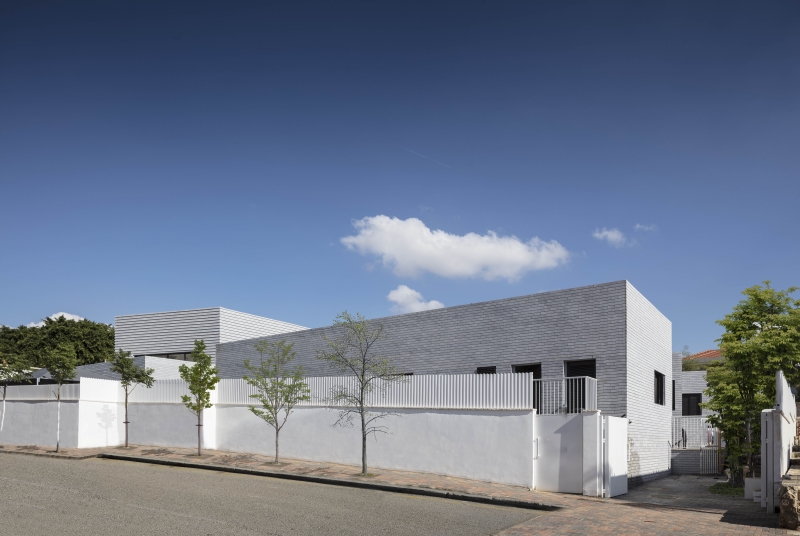This shelter is one of only a handful in the world which has been designed and built in consultation with the staff who will occupy and run it.
This will be charity No To Violence's first purpose-built shelter, as well as accommodating its administrative headquarters, and has been designed to house families from diverse ethnic and geographical backgrounds.
The site for the shelter measures 1600sq m and is located within a quiet residential neighbourhood surrounded by a mix of private residential houses and blocks of flats.
The brief specified a location within reach of local community resources, ie stores, jobs, health clinics, schools, parks and other green spaces, counselling centres and recreational facilities.
The new shelter replaces an existing one in the same city which was established 37 years ago.
The majority of existing shelters in Israel are not purpose-built. Located in converted buildings, they are overcrowded, with too many stairs and blind areas, compromising the safety of the residents.
The new brief thus called for a totally-secure and sheltered building - a peaceful haven that would give its inhabitants a sense of home.
The site was provided by the local municipality, but this proved a challenge, as local neighbours objected to it. Numerous consultations with neighbours and the municipality took place, including reviews of the residents' legal objections to the scheme by the High Court which went on for six years, before it ruled in favour of the shelter.
Two briefs were given: one was set out by the Ministry of Social Affairs; and the other, which complemented it, by the charity.
The charity was very involved in the development of the brief and the design discussions, stipulating that the shelter needed to accommodate up to 12 families, all of whom require individual privacy, yet need to co-exist with each other and the staff who look after them.
Each family has three children, on average, so the design of the building was predicated on a floating population of more than 24 residents at any one time.
Another paramount request was to create a sense of home and security for the inhabitants, without it feeling like a prison.
For safety reasons, residents spend most of their day in the shelter and so the major design challenge was how to accommodate all families in a peaceful manner for extended periods of time.
The building has two facades - the secure and protective exterior, and the inner facade, leading onto the central garden, the therapeutic ‘heart’ of the shelter.
On arrival at the shelter, each new family is given a small ‘house' that is part of the larger building.
In order to allow the families to conduct a normal daily routine in the shelter, the houses are separated from the communal functions and connected by the internal corridor.
The nursery is physically separated from the larger building, which allows it to function as an ordinary nursery would, allowing women to drop their children off in the mornings and collect them later in the day.
The green sanctum of the inner courtyard plays a crucial role as a meeting place for residents. It also serves a functional purpose, providing optimum visual connections between the house mother and the families, as well as between the women and their children.
The surrounding internal corridor - or ‘street’ - connects the inside and outside spaces and creates a free-flowing space in which women and children can interact, while at the same time maintaining mutual sightlines between them and the staff.

